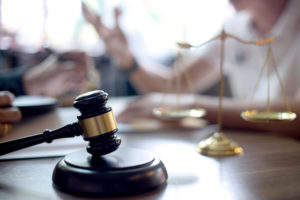TWO OFFICES IN NEW YORK CITY • Hablamos Español

Breach of Duty
Click For Your Free ConsulationNYC Personal Injury Lawyer » New York Personal Injury Resources » Breach of Duty
 Everyone owes a general duty of care to act with reasonable caution to avoid causing another party risk of harm or injury. A “breach” is a failure to perform a required duty or task.
Everyone owes a general duty of care to act with reasonable caution to avoid causing another party risk of harm or injury. A “breach” is a failure to perform a required duty or task.
Duty and breach of duty are two core elements of a negligence claim. Negligence is the basis for many personal injury cases filed in New York.
Table of Contents
 The duty of care is the first element you must prove for negligence. It is the requirement to act (or not act) in a certain way as required by law. A duty of care often arises because of the relationship between parties.
The duty of care is the first element you must prove for negligence. It is the requirement to act (or not act) in a certain way as required by law. A duty of care often arises because of the relationship between parties.
Examples of a duty of care include a doctor-patient relationship or a driver obeying traffic laws. Proving negligence begins with proving that the defendant owed a duty of care to the plaintiff.
A breach of duty is the failure to act in a specific manner. It can be an act or omission that does not meet a reasonable standard of care.
Examples of a breach of duty may include:
These are just a few examples of ways a party could breach their duty of care. It is best to speak with an experienced personal injury lawyer to determine whether someone breached their duty of care when they caused your injury.
You have the burden of proving the four elements of a negligence case by a preponderance of the evidence:
As discussed above, the first step is to prove that the defendant owed a duty of care to the plaintiff. Then, you must convince the jury that the defendant breached the duty of care.
You begin with establishing what the standard of care would have been in your situation. A jury measures the standard of care by what a reasonable person would have done in a similar situation.
The ”reasonable person” is a hypothetical person. The jury must decide what a person with reasonable prudence would have done if presented with the same circumstances as the defendant.
For example, would a reasonable person text while driving or drive under the influence, thereby increasing the risk of a car accident? Would a reasonable person clean up a spill on the floor to prevent someone from having a slip and fall accident?
Once the jurors decide what the standard of care would have been in your case, they compare the defendant’s actions to that standard. The defendant breached the duty of care if their actions fell short of the reasonable standard of care.
However, another consideration is a foreseeable risk. If the defendant could not foresee the risk or had no control over what happened, the jury might not find that the defendant breached the duty of care.
In some personal injury cases, defendants are held strictly liable for damages, regardless of intent or negligence. Certain conduct makes a defendant strictly liable for damages once the plaintiff establishes that the defendant engaged in the conduct.
Cases that involve strict liability include:
There could be other cases where strict liability applies. It’s important to discuss your situation with a personal injury attorney to determine your legal options.
Breach of duty is just one element of a negligence claim. You also have the burden of proving causation and damages. A person could be negligent because of a breach of duty but not be liable for damages if the plaintiff failed to prove causation.
Causation links the defendant’s conduct and the person’s injury. You must show that the defendant’s conduct was the direct and proximate cause of the plaintiff’s injury. In addition, the plaintiff must have sustained damages to recover compensation.
If another party caused your injuries, contact a New York City personal injury attorney to discuss your case. An experienced attorney will know how to successfully prove all elements of negligence, including breach of duty.
Money will not undo the pain and suffering you experienced. But it can help you recover from the financial losses as you continue to get your life back together after an accident or injury.
Search Our Site
Our Locations
New York City Office
450 7th Ave Suite 1605
New York, NY 10123
(212) 564 2800
Brooklyn Office
26 Court St., Suite 2511
Brooklyn, NY 11242
(718) 802-1600
We are available to take your call 24/7
